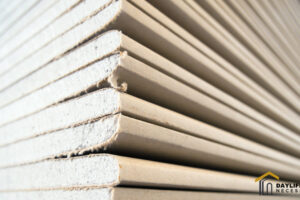When it comes to bathroom renovations, one of the most critical aspects is building a solid and waterproof shower pan.
A well-constructed shower pan not only ensures proper drainage but also prevents water from seeping into your concrete floor.
In this step-by-step guide, we will walk you through the process of how to build a shower pan on a concrete floor, ensuring a leak-free and long-lasting solution for your bathroom.
How to Build a Shower Pan on a Concrete Floor: A Step-by-Step Guide
Building a shower pan on a concrete floor can seem like a daunting task, but with the right tools and a bit of patience, you can create a durable, waterproof base for your shower. Here’s a friendly guide to help you through the process.
1. Gather Your Tools and Materials
Before diving in, make sure you have all the necessary tools and materials. Here’s a handy list to get you started:
- Shower Pan Liner: This waterproof barrier prevents water from seeping into the concrete.
- Mortar Mix: Essential for creating a solid base.
- Trowel: For spreading and shaping the mortar.
- Cement Board: Provides a sturdy surface for tiling.
- Tile and Tile Adhesive: Pick your favorite tile style and adhesive.
- Drain Assembly: Ensure it’s compatible with your shower pan liner.
- Utility Knife, Screws, and Screwdriver: For cutting and securing materials.
2. Prepare the Subfloor
Start by preparing your concrete subfloor. Make sure it’s clean, level, and free from debris. Use a level to check for any uneven areas, as this will affect your shower pan’s stability.
3. Install the Drain
Position the drain assembly in the center of your shower area. Follow the manufacturer’s instructions for proper installation. This step is crucial for ensuring proper drainage.
4. Build the Mortar Base
Mix the mortar according to the instructions on the package. Spread it evenly on the subfloor, sloping it gently towards the drain. Use a trowel to shape the mortar and create the desired slope. Allow it to dry completely.
5. Install the Shower Pan Liner
Lay the shower pan liner over the dried mortar base, ensuring it covers the entire shower area. Use a utility knife to cut holes for the drain and any other fixtures. Secure the liner to the wall studs with staples or adhesive.
6. Cement Board Installation
Next, install cement boards on the walls surrounding your shower area. Secure them with screws, making sure there are no gaps between the boards.
7. Apply Tile Adhesive
With the cement boards in place, you can now apply tile adhesive to the walls and shower pan floor. This creates a solid surface for your tiles to stick to.
8. Tile Your Shower
Carefully lay your chosen tiles on the adhesive-covered surfaces. Make sure they are evenly spaced and level. Allow the adhesive to dry completely before moving on.
9. Grout the Tiles
Once the adhesive is dry, apply grout between the tiles. Wipe away any excess grout with a damp sponge. Let it cure for the recommended time.
10. Finish with Sealer
To ensure your shower pan remains waterproof, apply a high-quality sealer to the grout lines and tile surface. This extra step will help prevent water damage.
For additional guidance, you can check out this detailed guide on shower pan installation and this comprehensive video tutorial.
By following these steps, you’ll have a sturdy, waterproof shower pan that will serve you well for years to come. Happy building!
Conclusion
Building a shower pan on a concrete floor may seem like a daunting task, but with the right tools and a well-thought-out plan, it’s a project that can be accomplished by any DIY enthusiast. By following these steps and paying attention to detail, you’ll have a leak-free and beautiful shower pan that will last for years to come.
FAQs – How to Build a Shower Pan on a Concrete Floor
1. How long does it take for the mortar base to dry?
The drying time for the mortar base can vary depending on humidity and temperature. It typically takes 24 to 48 hours for the mortar to fully cure.
2. Can I use any type of tile for my shower?
You can choose any tile you like for your shower, but it’s essential to select one that is suitable for wet environments to ensure durability.
3. Do I need to hire a professional for this project?
While hiring a professional is an option, building a shower pan on a concrete floor can be a DIY project with the right guidance and tools.
4. Is it necessary to apply a sealer to the grout and tile?
Yes, applying a sealer is crucial to prevent water from seeping into the grout lines and damaging the underlying concrete floor.
5. Can I install a shower pan liner without prior experience?
Installing a shower pan liner requires some basic DIY skills, but with careful attention to detail and following instructions, it’s achievable for beginners.




